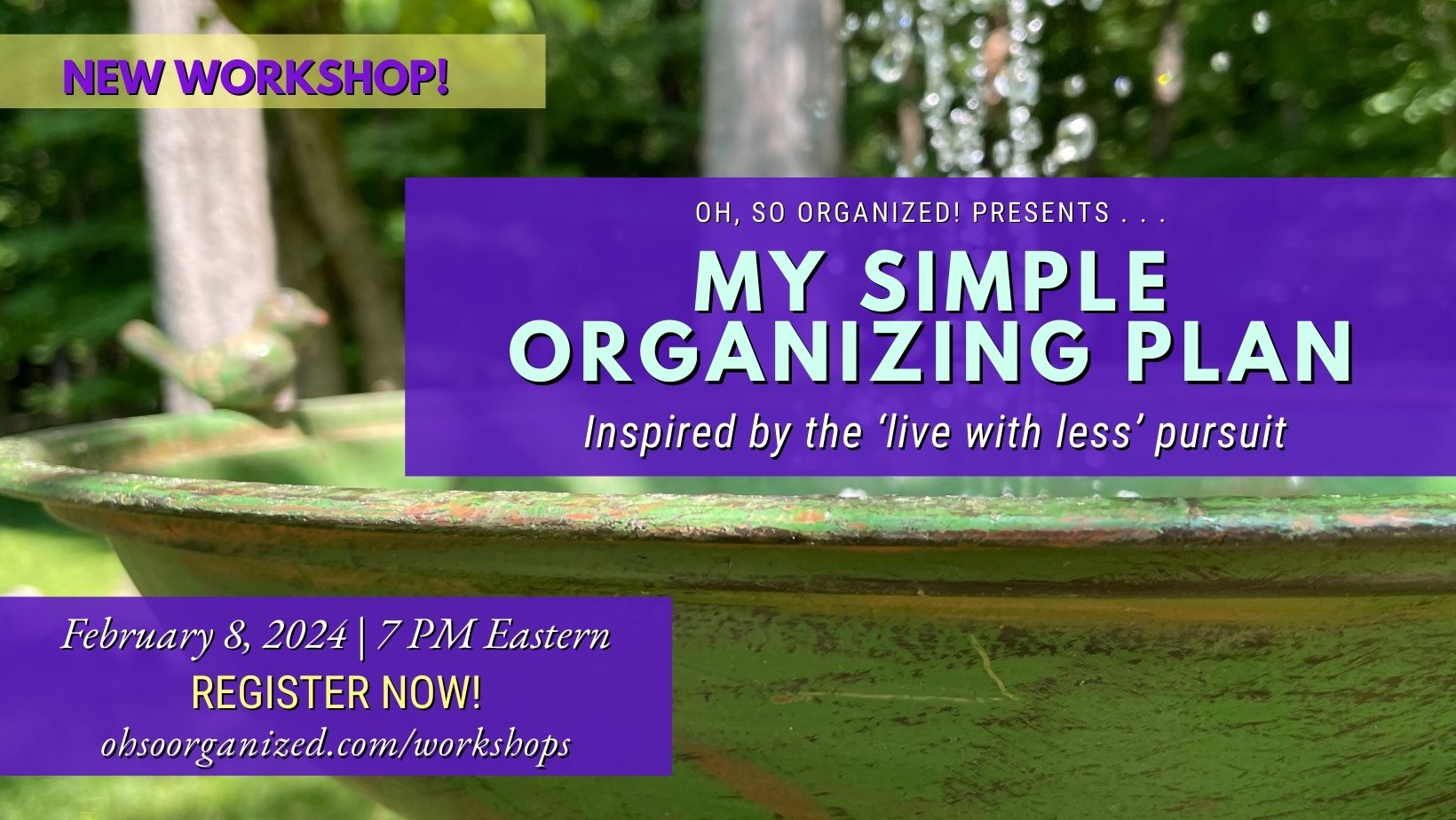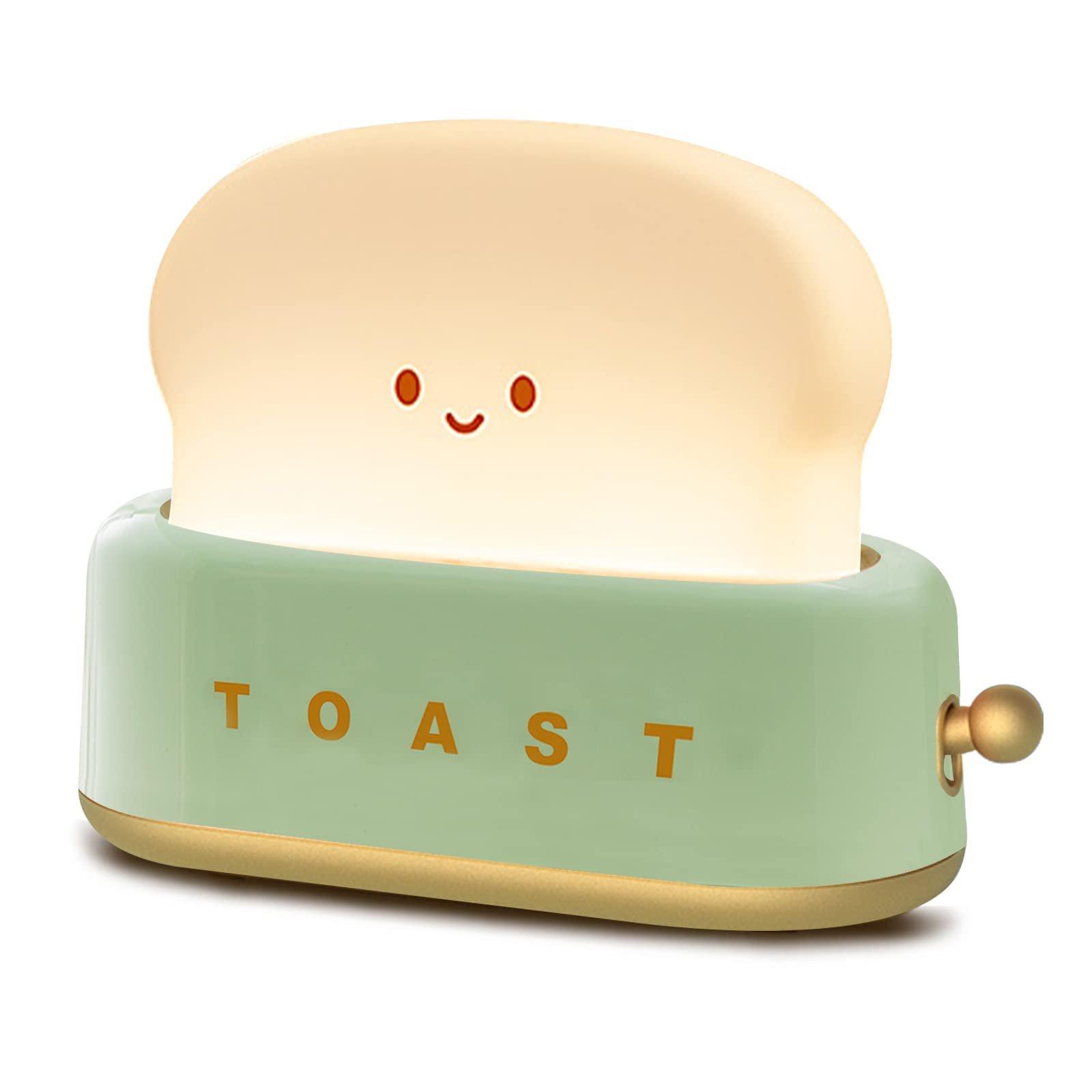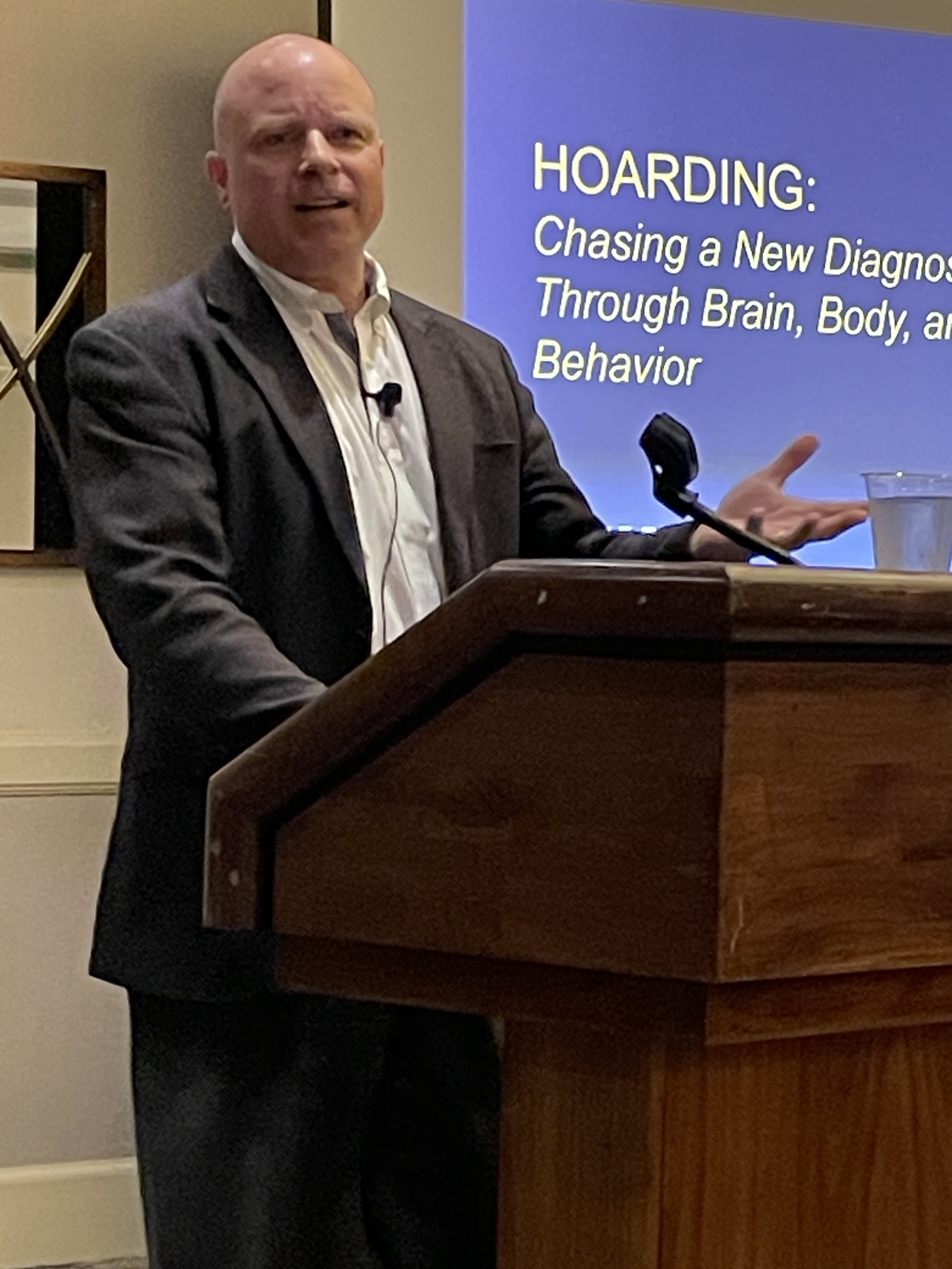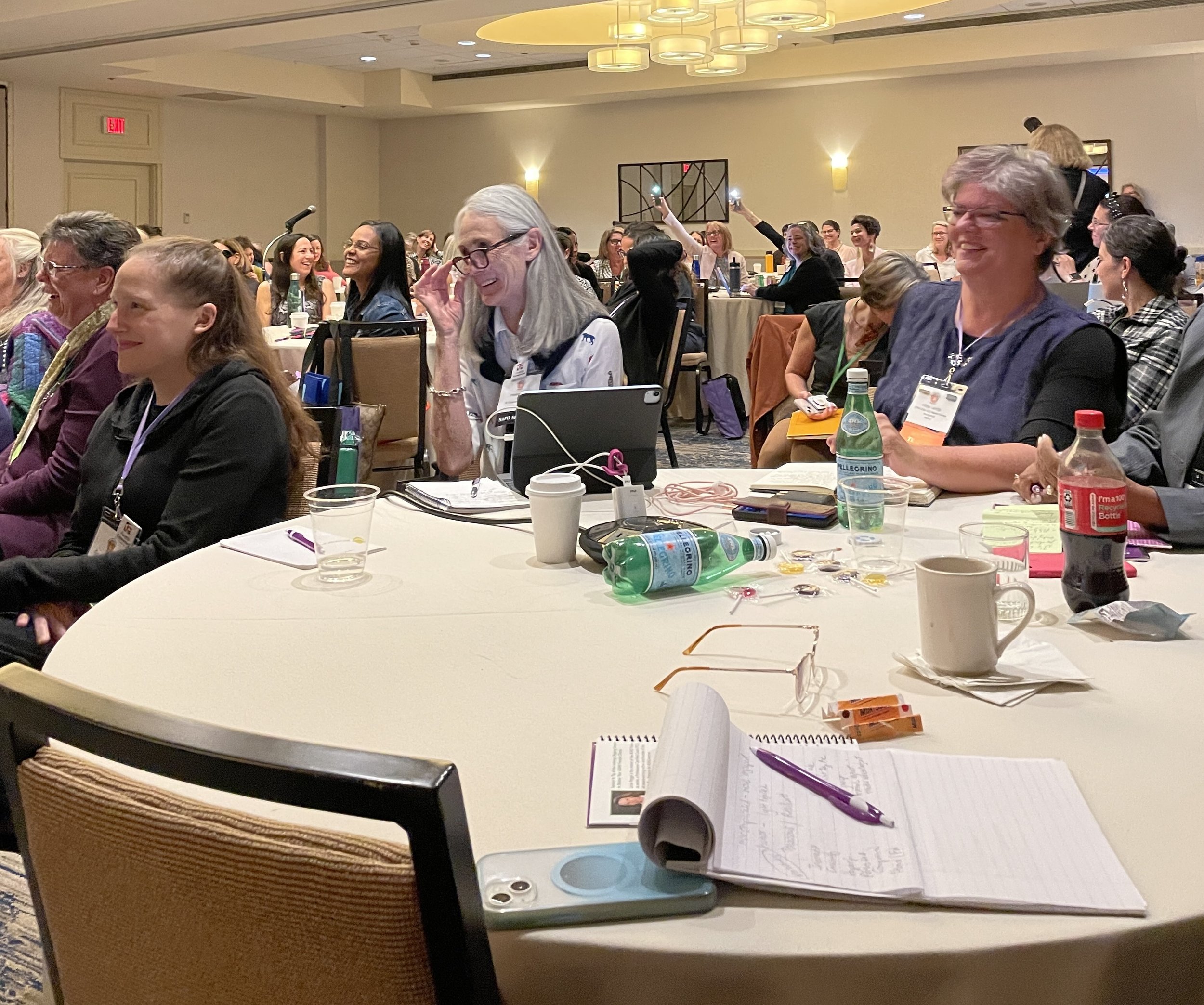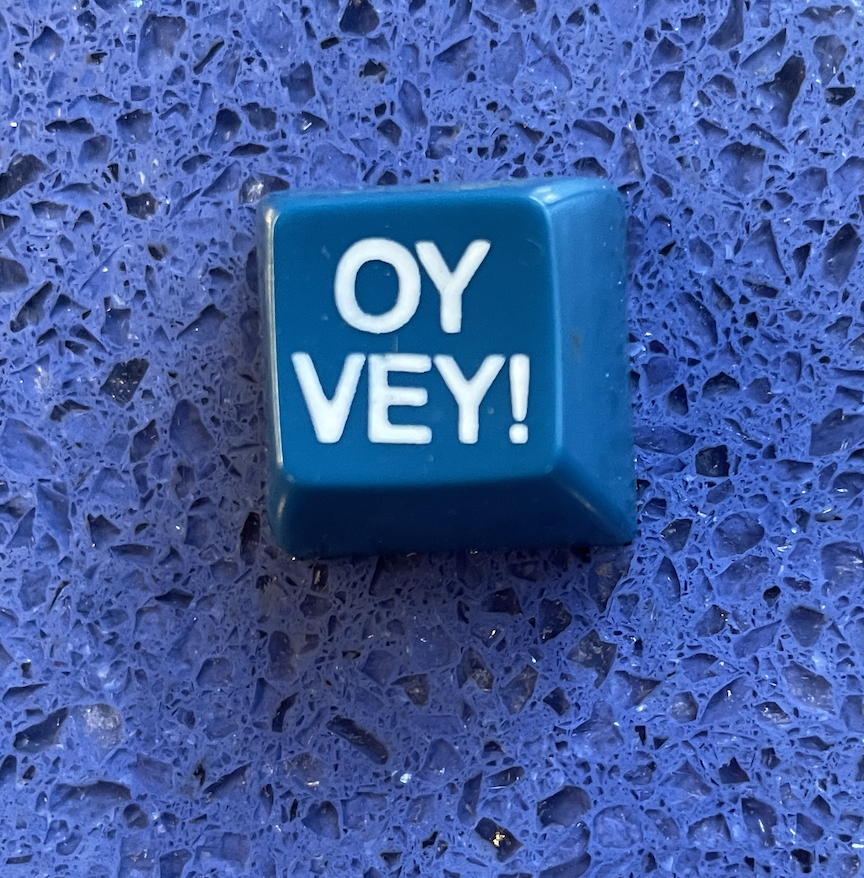This is the newest release (v43) of the “What’s Interesting?” feature, with my latest finds that inform, educate, and relate to organizing and life balance. These unique, inspiring, fresh start discoveries reflect this month’s blog theme.
You are a passionate, generous, and engaged group. I am deeply grateful for your ongoing presence, positive energy, and contributions to this community. I look forward to your participation and additions to the collection I’ve sourced.
What do you find interesting?
What’s Interesting? – 5 Best Fresh Start Discoveries
1. Interesting Workshop – Clutter-Free Fresh Start
Do you feel overwhelmed with the clutter and disorganization in your life? If you answered “yes,” you’re not alone. Help is here! The New Year is an excellent time to change how you approach decluttering and organization.
Join me, Linda Samuels, Professional Organizer, for an empowering workshop – My Simple Organizing Plan, on Thursday, February 8th, from 7:00-8:00 pm Eastern. Together, we’ll uncover the impact of clutter, master motivation, and create a personal decluttering plan.
During this one-hour Zoom workshop, you’ll come away with a transformative, ready-to-implement strategy to make immediate positive changes in your life. Say goodbye to chaos and hello to a calmer, organized you. Reserve your spot now!
2. Interesting Trend – Immersive Fresh Start
Color drenching is a design trend that has emerged in recent years. Amy Wax, an internationally recognized color expert, describes a color-drenched interior as “designed with one color in mind, and that color doesn’t just coat the walls…it’s everywhere…a real color-drenched interior means that the ceiling, trim, railings, doors, and sometimes even the floor all have the same color.”
Are you wondering about the connection between the color-drenching trend and a fresh start? I thought you might. Words describing this trend include daring, saturated, adventurous, all-consuming, harmonizing, sensual, and calming. As you begin this New Year and embrace your fresh start, which words speak to you? Do you want more adventures and boldness, or would you like more calm and harmony? Select a theme to ‘drench’ your year that can be a guiding force for your choices and goals. What color or word speaks to you?
3. Interesting Read – Peaceful Fresh Start
Do you desire a more peaceful, calmer life? We now have 24-7 access to people, places, and things. Life has become complicated, noisy, and distracting.
A Simpler Life – A Guide to Greater Serenity, Ease and Clarity by The School of Life provides a path to “the simpler lives we crave and deserve.” We’re at an unusual juncture where the yearning for simplicity is historically reasonably new. “We long to unburden ourselves of excess, to have more straightforward relationships, to declutter our homes, and to avoid noise, complexity, and fuss. Simplicity has grown central to our vision of happiness.”
The book focuses on five areas to simplify- relationships, social life, lifestyle, work, and culture. If your fresh start includes the desire to release the excess, you’ll appreciate the suggestions explored. “Simplicity isn’t so much a life with a few things and commitments in it, as a life with the right, necessary things, attuned to our flourishing. Our lives will feel – and be – simpler when we’ve probed our minds to yield…the knowledge of what we truly want.”
“Your fresh start is ready for you to lean in, activate, and thrive.”
4. Interesting Product – Focused Fresh Start
During a session with one of my virtual organizing clients, she showed me an adorable gift she purchased for the holidays. Toast is marketed as a night light. However, she and a few of her friends use it differently. They turn it on to help them focus when working. It has a warm, dimmable glow, an adjustable timer, and a ‘friendly’ face.
I couldn’t resist, so I purchased a mint green one to see if it would help me. To my delight, it does. As a matter of fact, while writing this post, I brought my Toast nearby to keep me company and hold my attention. I didn’t use the timer feature, but I found the gentle light worked for me.
Check out this little fellow if you want your fresh start to include more focused work and improved concentration.
5. Interesting Thought – Promising Fresh Start
What is the best thing about the New Year? It allows you to reset, rethink, and reimagine how you want the next twelve months to be. If you want to make tiny tweaks or strive for those big, audacious goals, you have the spaciousness to make things happen. Let go of what doesn’t work, learn from your mishaps, and activate the hope-filled ‘blank canvas’ the New Year brings. Your fresh start is ready for you to lean in, activate, and thrive.
Do you have an interesting, fresh start-related discovery? Which of these resonates with you? I’d love to hear your thoughts. I invite you to join the conversation.
Here’s to you and a happy, healthy, joy-filled, and organized New Year!




